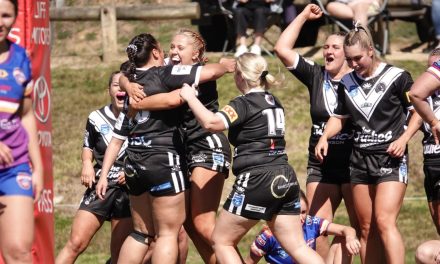The Rivers of Carbon Team successfully held the Yass River Restoration Walk over the Yass Gorge, conducted on Sunday, the 21st of May from 10 AM until 1 PM.
The walk, organised by Lori Gould, the Program Manager for Rivers Of Carbon, featured talks on Indigenous land management, the local ecology, and workshops around bushtucker and traditional tools, all the while allowing walkers to take in the scenery.
“The walk went great, it wasn’t the best weather but we still got about thirty-five to forty people coming along. We went on a really nice cultural walk up the river, talked about bush tucker, and Indigenous land management, then when we came back we talked about river restoration with some coffee. It was a really nice day.”
Through these talks throughout the walk, walkers were given the chance to learn new things about the Yass River, in particular how to continue its maintenance and restoration, with Lori commenting on what both she and others learnt.
“There was the practical side of managing water, such as what are some beneficial plants, what to put back into rivers, how plants help with water quality as well as the traditional use of some of those plants”, said Lori, moving on from fauna to the fisheries side of the walk;
“The other big thing was the fish, the history of fish stocking in the Yass River and the fact that with all the river rehabilitation and restocking programs, the native fish population has come back from being really poor. Over the last 10 or 15 years the population has improved immensely.”

Lori too learnt new things about the Yass River from the walk, noting details regarding the fish population, and crediting Ross Webster for his knowledge.
“I learn something new every time. I learnt from Ross Webster, from the fishing club, just how many fish have been restocked into the Yass River. It was more than just a little, it was thousands and thousands. It’s a double-pronged approach to fixing up the Yass River”, said Lori.
Lori also further established the ecology and relationship between fauna, fish, and water quality, stating;
“Having lots of sediment and soil in the waters means our native fish can’t lay eggs, because all the rocks get covered in soil and the eggs can’t stick. If you don’t have a diversity of native fauna hanging over the river, we don’t have enough bugs for fish to eat.”
Lori notes that most of the attendees were landowners, and is hopeful that the walk will inspire new knowledge and appreciation about the integration of traditional and modern methods.
“We have a whole new strategy. We’re getting them to appreciate a diverse range of water cleaning”, said Lori.
For those interested in future events, or assisting in the maintenance and restoration of Yass Valley waterways, Lori advises getting onto the Australian River Restoration Centre mailing list, “we put out a whole lot of information people can access for free. A whole range of practical information, so if they want to stay updated we send out stuff when it’s relevant.”
Griffin Palen







